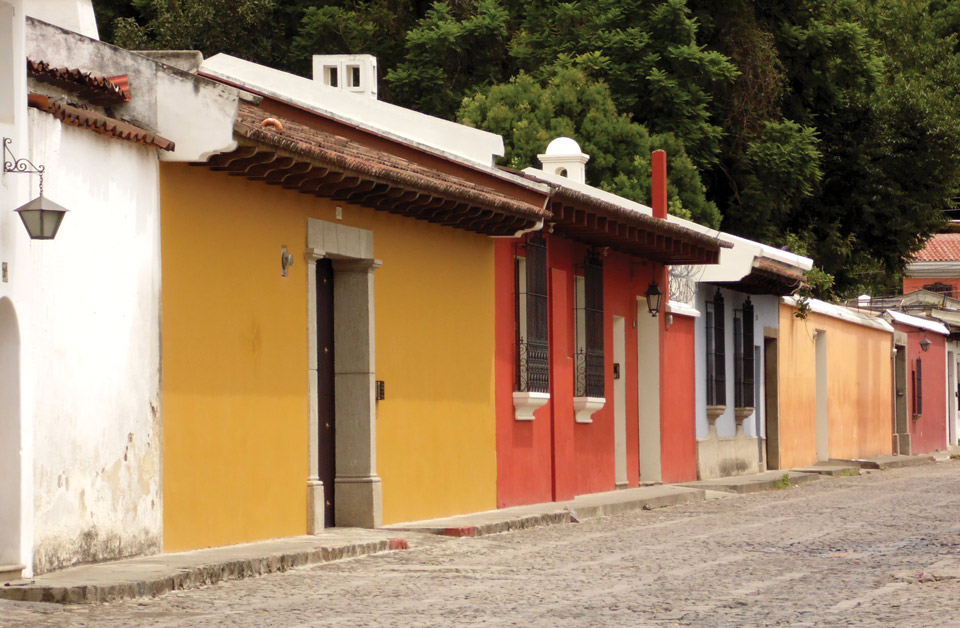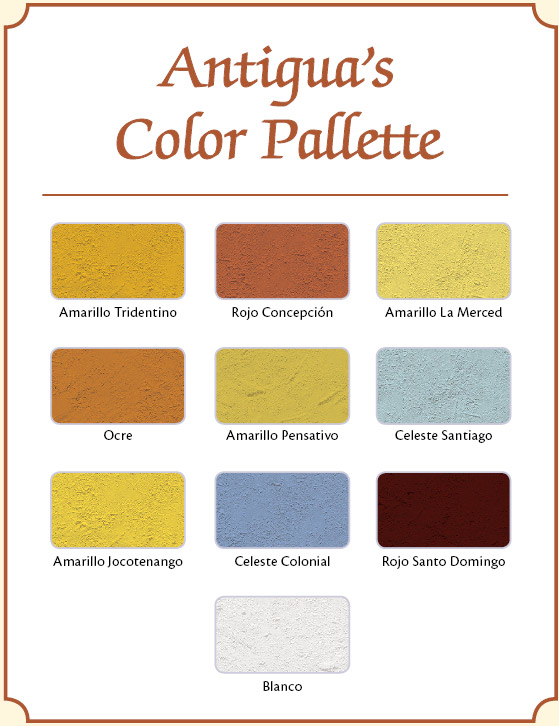Touched by Color in Antigua Guatemala
Guatemala Insight by Elizabeth Bell.
With the passing of Laura Mora (1923-2015), famed paintings and mural paintings conservator who taught us about the importance of the history of colors at ICCROM (International Centre for the Conservation and Restoration of Monuments) in Rome, it brings to life again the importance of exceptional professors and mentors who move us to a new way of thinking, in this case, a perception of color —the colors Antigua.
Indeed, when the Protective Law of La Antigua Guatemala was passed by the Guatemalan Congress in 1969, Antigüeños were concerned that, for some reason, all of the houses would have to be painted white. Not at all. Over the years, bright colors replaced the lime-based (cal) colors. While working at the CNPAG (Consejo Nacional Para la Protección de La Antigua Guatemala) in the late 70s-80s, we did not find the words to regulate color: This red works but that red doesn’t.
When the Arch of Santa Catalina was painted an orangey-yellow in the 90s, my colleague, architect José María Magaña (former Conservador de la Ciudad and co-founder of Salvemos Antigua) complained as we gossiped on a street corner. Indeed, Sherman Williams had donated paint to the city for its signature monument. I suggested to him to do a historical study of the traditional lime-based colors of paints—simply done by scraping the old walls—and recreate them with any paint company. I would be his first client! Mixing the materials was somewhat difficult: powder paint, lime, water and add sugar. In mixing a new batch, it would invariably be a different hue! Much to my surprise…he did it! Not only did he do the study, but he spoke to paint company El Volcán and the CNPAG so now we can buy the paints! With the help of Fuller techniques, the project included painting La Merced Church as a sample. With 17,000 gallons of paint, one question was, “What white to paint the dome?” We tied in the color of an older chapel behind the altar: “not too white so it doesn’t look like the topping on a birthday cake.” Antigua began to change its colors.
Does UNESCO regulate color? Not at all. While Antigua is included in the UNESCO World Heritage Site list, the UN does not regulate any efforts in Antigua. Many of us have been UNESCO trained and we certainly are all on the same page with historic preservation issues, but color is chosen locally. The colors are sky blue (not bright light blue), brick red (not cardinal red), sun yellow, peach, white and others. The CNPAG has a list of suggested colors. Lime-based paints are more appropriate for old walls, as they allow the humidity to dissipate.
So after years of rescuing Antigua’s monumental architecture from 200 years of neglect, we are now focusing on the importance of color!

